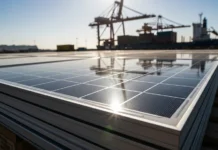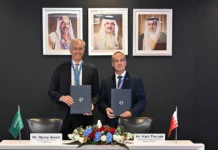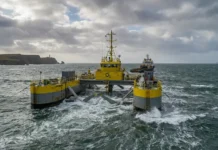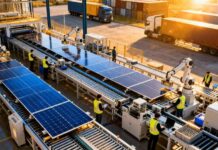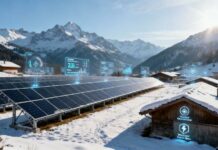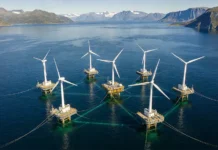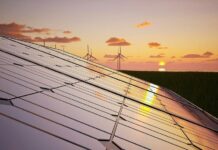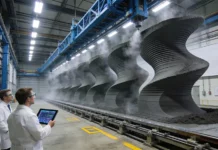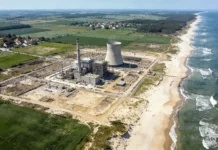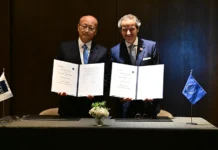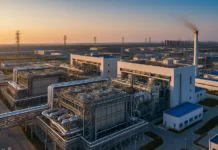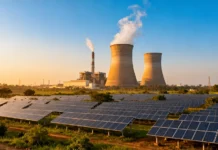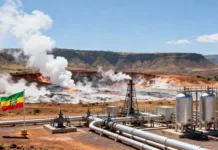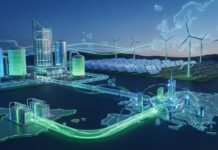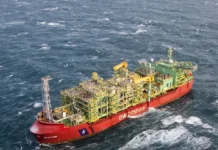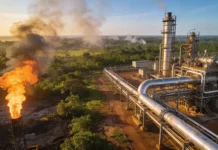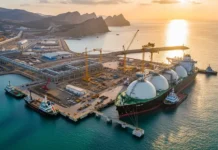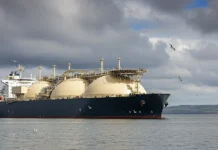It has been confirmed by the government of Australia that an ambitious proposal to construct a solar farm in the Northern Territory that would cover 12,400 hectares and send electricity to Singapore has been approved.
During the course of the project, which is valued at US$19 billion and was built by the Australian business Sun Cable, the company will deliver the energy to the city of Darwin by means of 800 kilometers of overhead transmission lines. Submarine cables that stretch for more than 4,000 kilometers are used to transport the power from that location to Singapore.
The project, which will be known as the Australia-Asia PowerLink, is intended to generate 6 gigawatts of power annually and will be the biggest solar precinct in the whole continent of Asia. Out of this total, 4 gigawatts will be provided to large-scale industrial users in Darwin, while 2 gigawatts will be sent to Singapore. This will provide around fifteen percent of the city-state’s required amount of power.
In 2027, it is anticipated that a final investment decision would be made, and the beginning of the provision of power will occur in the early 2030s.
The energy mix of the future for Singapore
In addition, the Australian-Asia PowerLink is a component of Singapore’s larger ambition to import up to 4 gigawatts (GW) of low-carbon power by the year 2035 and to meet its goal of reaching net zero emissions by the year 2050. In order for Singapore to reach its goal of reaching net zero emissions by the year 2050, the country’s present gas output would need to be cut in half by the year 2040.
However, the nation is confronted with significant obstacles in its energy landscape, which include the following:
There are not enough natural resources in Singapore, and the country does not have any indigenous energy resources like coal, oil, or natural gas. Because of this, the nation is compelled to import almost all of its fuel, particularly natural gas, which is used in the production of more than ninety percent of its energy generated. A significant portion of the entire cost of energy is accounted for by the expenses associated with the importation and transportation of these fuels.
The restricted geographical area in Singapore makes it difficult to establish large-scale renewable energy projects like solar farms. This is because of the land restrictions. Even if solar energy is being implemented, the fact that it is on a small scale and requires a significant amount of land makes it more costly than other nations where there is an abundance of room for such installations. In addition, the cost of creative solutions such as floating solar farms or urban solar panels is often higher than the cost of conventional solar projects.
Singapore’s energy infrastructure, notably gas power plants, must fulfill severe environmental and efficiency criteria, which results in high operating and maintenance expenses. The significant expenditures that are connected with maintaining and updating this infrastructure, in addition to the trained manpower that is necessary to run it, contribute to the total cost of power generation.
Due to the fact that Singapore is a natural gas importer, the country’s energy expenses are very susceptible to variations in the pricing of energy on the worldwide market. As a result of an increase in the price of gas on a worldwide scale, the cost of power in Singapore is immediately impacted.
Interconnections across international borders are essential for Singapore’s shift to renewable forms of energy.
For Singapore to have a future that is energy-resilient, it is necessary for the country to take advantage of the renewable energy potential of its neighbors in the area.
Through the implementation of its 2030 Green Plan, the nation intends to establish interconnections with a capacity of up to 4 gigawatts (GW) in order to import renewable energy from Indonesia, Vietnam, Malaysia, and Cambodia.
The integration of energy sources in the area is still in its infant stages at the moment. After a great deal of discussion and negotiation, the Lao People’s Democratic Republic, Thailand, Malaysia, and Singapore Power Integration Project (LTMS-PIP) was launched in 2022. This was the first multilateral power integration project in Southeast Asia. Lao People’s Democratic Republic is providing Singapore with 100 megawatts (MW) of hydropower as part of this project.
A renewal arrangement is currently being explored, despite the fact that the contract was terminated in June of 2024.
The Asia-Australian PowerLink has the potential to encourage investments in renewable energy across Southeast Asia.
As a result, the Australia-Asia PowerLink should serve as a wake-up call for nations in the area to encourage investments in renewable energy, especially considering the fact that the region’s potential for renewable energy extends beyond solar energy alone. It is the biggest renewable energy infrastructure project in the area, and it establishes a precedent that may motivate governments and private investors to explore enterprises that are comparable to it.
In addition, the project’s cutting-edge technology and infrastructure have the potential to facilitate the transfer of technology and the development of new ideas in Southeast Asian countries. It is possible that countries in the area would embrace technology that are comparable to one another, which will result in increased efficiency and cost-effectiveness in their renewable energy projects.
Considering that it is anticipated that the need for energy in Southeast Asia would quadruple by the year 2050, this is of utmost significance. If the area continues to rely on fossil fuels, it is possible that by the year 2050, it will become a net importer of gas, and by the year 2039, it will become a net importer of coal.



